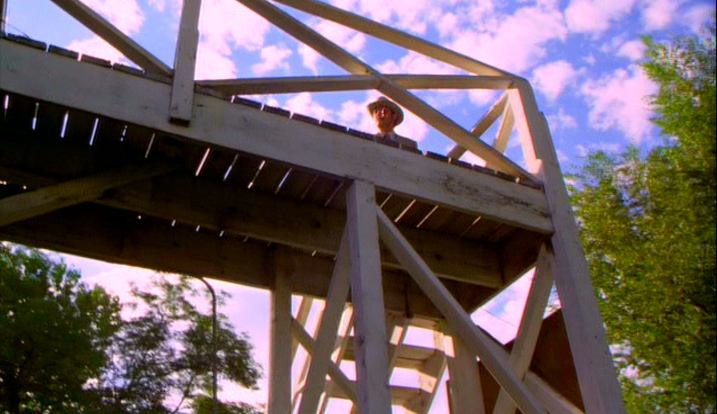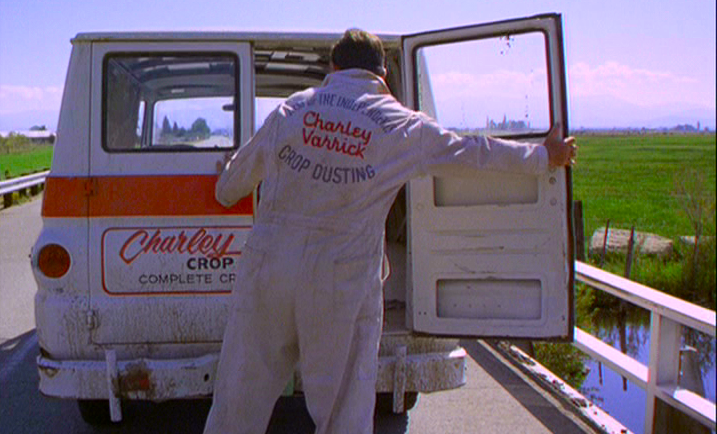 One of the starkest challenges faced by the auteurists in late sixties and early seventies was that many of their idols were dead or sidelined. Among those still working, their films looked increasingly, aggressively irrelevant—in the least, very shaky ground for proclaiming a given director an axiom of cinema. You might read Greg Ford championing Hawks’s Rio Lobo as “something entirely new” or Tim Hunter—in the Harvard Crimson(!)—declaring A Countess from Hong Kong the finest movie that Chaplin had ever made, but these were minority voices of enthusiasm in a youth-baiting media landscape that demonstrated considerable apathy towards the last gasps of the Hollywood veterans.
One of the starkest challenges faced by the auteurists in late sixties and early seventies was that many of their idols were dead or sidelined. Among those still working, their films looked increasingly, aggressively irrelevant—in the least, very shaky ground for proclaiming a given director an axiom of cinema. You might read Greg Ford championing Hawks’s Rio Lobo as “something entirely new” or Tim Hunter—in the Harvard Crimson(!)—declaring A Countess from Hong Kong the finest movie that Chaplin had ever made, but these were minority voices of enthusiasm in a youth-baiting media landscape that demonstrated considerable apathy towards the last gasps of the Hollywood veterans.
In some sense, that apathy was earned. A film like Ford’s 7 Women (acclaimed by Andrew Sarris and awarded the highest rating by a sizable number of Sight and Sound contributors) was clearly and actively out of step with its cultural moment—resurrecting forms of melodrama, ethnic masquerade, and studio-bound choreography that can only be described as reactionary. For those who admired Ford for his ability to sketch thorough examinations of American history and culture in popular terms, major stars and the baggage wrapped up in them very much part of the equation, 7 Women looked like an obvious diminution and retreat. (On the other hand, 7 Women remains notable today for its confused but obviously sincere account of sexual upheaval; if it was an irrelevant film for 1966, it at least had the good sense to make its irrelevance central and bewilderingly felt.)
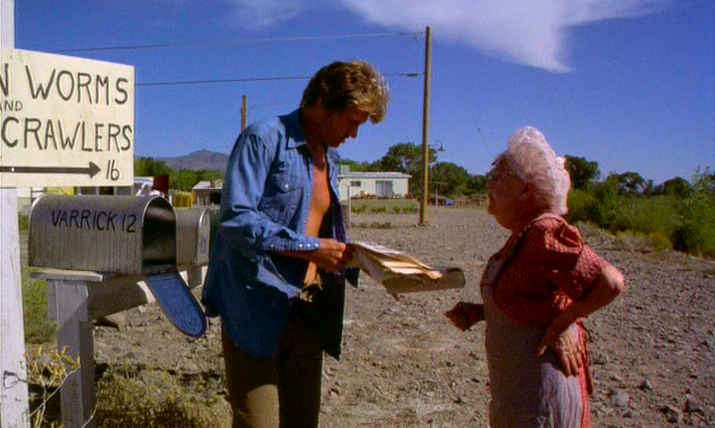 When it comes to Don Siegel, all of these considerations and circumlocutions and excuses fall away. Alone among his peers, here was an old industry hand lucky enough to be ‘rediscovered’ in the prime of a secretly-storied career. A sense of excitement and reclaimed history accompanied newly-published filmographies—who knew that a single man helmed Invasion of the Body Snatchers and that grisly Lee Marvin version of The Killers and that Elvis western that didn’t have hardly any songs and headed the montage division at Warner Bros.? Here was an unacknowledged cultural through line for a generation of boomers, uniting teen-age touchstones with all those zippy old movies that played endlessly on late-nite TV.
When it comes to Don Siegel, all of these considerations and circumlocutions and excuses fall away. Alone among his peers, here was an old industry hand lucky enough to be ‘rediscovered’ in the prime of a secretly-storied career. A sense of excitement and reclaimed history accompanied newly-published filmographies—who knew that a single man helmed Invasion of the Body Snatchers and that grisly Lee Marvin version of The Killers and that Elvis western that didn’t have hardly any songs and headed the montage division at Warner Bros.? Here was an unacknowledged cultural through line for a generation of boomers, uniting teen-age touchstones with all those zippy old movies that played endlessly on late-nite TV.
But his new stuff was great, too. He built upon Sergio Leone’s invention of Clint Eastwood and gave America Dirty Harry, the seductive and clinically, hilariously literal expression of Silent Majority gripes. With The Beguiled, Siegel successfully fused art house and drive-in, silently bridging a cultural divide in an era characterized by pervasive strife.
Charley Varrick may not have looked like anything special when it was new, but it stands now as a wickedly austere art-thriller with a particular feeling for landscape. There’s a whole world reflecting back through the passenger-side mirror of Charley’s van and a grandeur that halts everyone trespassing through the mountains. There’s a density of urban detail, too, like Albuquerque needs the neon to keep itself from being swallowed up again by the land. Every facet of the production design is right—the Coke machine and the hundred-dollar-bill doormat in the whore house, the cat mobile hanging in the photographer’s studio. They’re totally extraneous details that a lesser movie would ignore or grow impatient with.
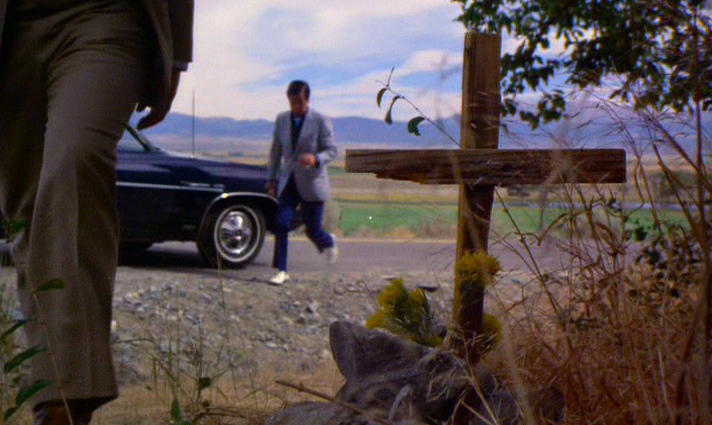 It’s not that Charley Varrick is attuned, consciously or not, to any particular idea of authenticity. Compared to something like Five Easy Pieces, it lacks a need to nervously declare its affinity with adult feelings and working-class situations. Instead, Charley Varrick knows something more elusive: the exact light, flooding through that exact beige curtain, that makes the modest furnishings of the Varricks’ mobile home look hard-won and lived-in. The particular red of the bank interior in the first reel suggests a whole social history, the grand past of this building and its multivalent meaning for the community of Tres Cruces.
It’s not that Charley Varrick is attuned, consciously or not, to any particular idea of authenticity. Compared to something like Five Easy Pieces, it lacks a need to nervously declare its affinity with adult feelings and working-class situations. Instead, Charley Varrick knows something more elusive: the exact light, flooding through that exact beige curtain, that makes the modest furnishings of the Varricks’ mobile home look hard-won and lived-in. The particular red of the bank interior in the first reel suggests a whole social history, the grand past of this building and its multivalent meaning for the community of Tres Cruces.
It’s tempting to attribute all this to Siegel, if biography is destiny. There’s a romantic thread to Siegel’s memoir, A Siegel Film—an industry tyro who rose through the ranks but remained a highly technical filmmaker, more attuned to the work of gaffers and effects men and stunt drivers and the like than the demands of the front office. Indeed, the most frustrating thing about the book is the consistency of its anecdotes. Every other page, Siegel is arguing with some spineless studio entity about how he knows that he can do such-and-such a shot better or cheaper or more efficiently if only they would just leave him alone. He always wins, too. An unreliable account of studio politics and filmmaking, yes, but a compelling epitaph that offers great insight into how Siegel situated his craft and ethos.
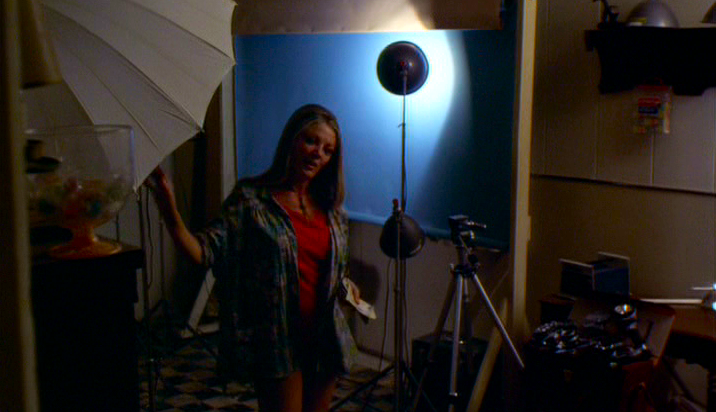 There’s nothing flashy in Charley Varrick’s style, just a confident minimalism. (What other movie would play out its longest and most complex dialogue sequence in a field of cows, largely in one shot?) Siegel has no time for big thematic statements, but the snatches of talk we hear—about ‘the combine,’ about labor disputes, about powerful interests that won’t stop until they’ve killed you dead—share a powerful and immediate kind of pervasiveness. There’s something malignant here, something that we can fight without any expectation of closure or understanding. The only thing left is personal dignity—in a job well done, in a clever twist and a hot tryst, in outsmarting the mafia or staying honest in a back-handed way.
There’s nothing flashy in Charley Varrick’s style, just a confident minimalism. (What other movie would play out its longest and most complex dialogue sequence in a field of cows, largely in one shot?) Siegel has no time for big thematic statements, but the snatches of talk we hear—about ‘the combine,’ about labor disputes, about powerful interests that won’t stop until they’ve killed you dead—share a powerful and immediate kind of pervasiveness. There’s something malignant here, something that we can fight without any expectation of closure or understanding. The only thing left is personal dignity—in a job well done, in a clever twist and a hot tryst, in outsmarting the mafia or staying honest in a back-handed way.
Significantly, A Siegel Film reports Walter Matthau’s irritation with the script and prints excerpts from a tape of suggestions that the actor offered:
I think that there should be a device which explains what is happening . . . . For example, at the beginning of the picture a man telling this story to a story editor in a motion-picture company about what actually happened to him many years ago. That would be Charley Varrick, perhaps ten years after the picture starts, or maybe twenty. How old do you want to play him? Or you could have Charley on a psychiatrist’s couch in Argentina—London would be better, because then he would be speaking English, in which he has to get this story of what happened to him out of his system—so that before each of the things happen, they are explained: his motives are explained, his reasons are explained, the thing he’s going to do are explained.
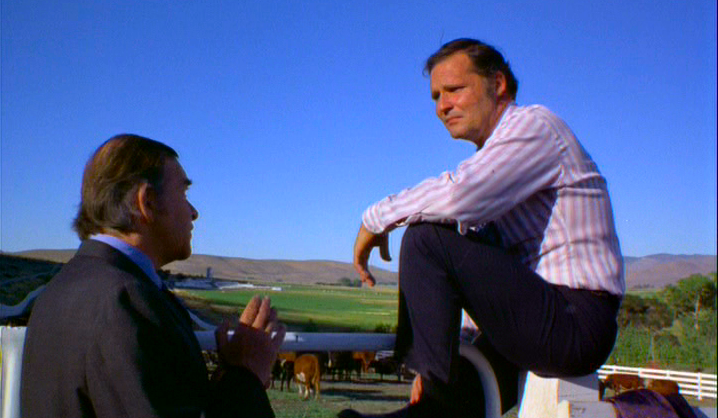 Paradoxically, Matthau gives the best performance of his career even though his stated interpretation of the character and the script does great violence to everything that makes Charley Varrick distinctive and good. Matthau’s ideas here essentially impose a crude showbiz framework and understanding upon a character that could not be further away from these things. Varrick is not some rogue reveling in his own cleverness and the feats he’s seen. He’s beat-down, tired, crucially unsure of his strategy (one of the pleasures of Charley Varrick is pinning down exactly what Matthau is planning one moment to the next), fighting to hold onto he’s-not-quite-sure-what. It’s what makes the melancholy of Charley Varrick affecting and ultimately apart from the much-vaunted New Hollywood efforts of the period. It feels like a modest culmination, built up from a lifetime of craft and unexplained motivations.
Paradoxically, Matthau gives the best performance of his career even though his stated interpretation of the character and the script does great violence to everything that makes Charley Varrick distinctive and good. Matthau’s ideas here essentially impose a crude showbiz framework and understanding upon a character that could not be further away from these things. Varrick is not some rogue reveling in his own cleverness and the feats he’s seen. He’s beat-down, tired, crucially unsure of his strategy (one of the pleasures of Charley Varrick is pinning down exactly what Matthau is planning one moment to the next), fighting to hold onto he’s-not-quite-sure-what. It’s what makes the melancholy of Charley Varrick affecting and ultimately apart from the much-vaunted New Hollywood efforts of the period. It feels like a modest culmination, built up from a lifetime of craft and unexplained motivations.
The Northwest Chicago Film Society will be screening Charley Varrick in an archival 35mm print from Universal Studios at the Portage Theater on August 31. Special thanks to Paul Ginsburg and Dennis Chong. Please see our current calendar for more information. And stay tuned for more in-depth blog coverage of next seasons’s calendar.

